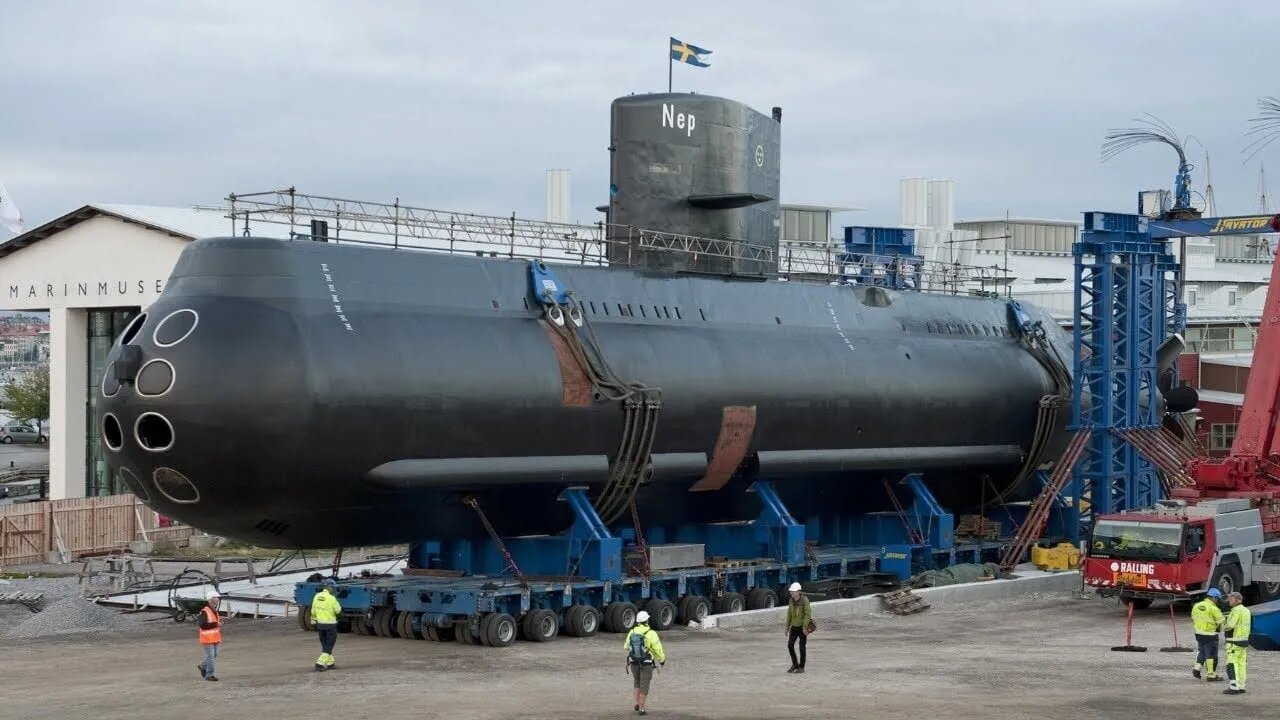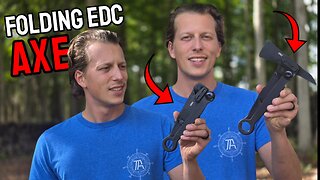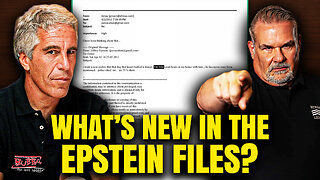Premium Only Content

Sweden's new submarine has advanced powers
Sweden's new submarine has advanced powers.
As Sweden prepares its bid to join the North Atlantic Treaty Organization (NATO), it has also passed milestones in strengthening its military capabilities. Last month, the country laid the keel for its first submarine in more than 20 years - the so-called HMS Blekinge - manufacturer Saab said in a press release.
The laying of the keel is an old shipbuilding tradition where coins are placed under the keel of the ship during the construction phase to bring good luck. In the manufacture of submarines, a ceremony is carried out when the first part of the hull is to be joined.
The project began in 2014 when the Swedish government began making plans to strengthen its underwater capabilities. The next year, the country ordered its two new submarines in two decades.
The Blekinge-class submarines
The new crafts are Blekinge-class submarines. At 213 feet (66 m) in length, each of these subs will have a displacement of 1,925 tons and be propelled by three diesel engines and three Stirling engines. The latter of the engines uses air-independent propulsion (AIP) that will allow the submarine to dive for a period of more than 18 days, Naval News reported.
The submarine has a standard complement of 26 sailors but can be modified to have up to 35 sailors onboard. Options are also available to further expand the submarine design to have 50 sailors but a smaller variant with a footprint of 164 feet (50 m) and displacement of 1,100 tons is also possible in the future. Even the smaller submarine can be equipped with AIP while all can be armed with torpedoes and mines while being equipped with autonomous underwater vehicles (AUVs), remotely operated vehicles (ROVs) as well as magnetic silencing facilities (MSF).
The importance of being silent in the sea
Swedes already excel in noise cancellation technology used in underwater warfare, 1945 reported. With the Blenkige-class, the country is spending another $840 million to improve its previous designs.
Flexible mountings designed on the submarine are expected to help it withstand shocks, reduce transient noise and further reduce the chances of detection by adversaries. The frame of the submarine will also absorb noise while its air ducts and pipes are expected to be quiet as well.
With options of deploying UAV and ROV, the submarine can stay away from risky missions while still being able to carry out intelligence, surveillance, and reconnaissance tasks. The unmanned vehicles could use active sonar to increase the submarine's reach, even as it remains quietly hidden at a safe distance, poised to stealthily exit the area if the robotic vehicles are detected and destroyed.
-
 LIVE
LIVE
LFA TV
10 hours agoLIVE & BREAKING NEWS! | THURSDAY 11/13/25
6,336 watching -
 21:21
21:21
Jasmin Laine
16 hours agoTrump NAMED in Epstein Files—Poilievre LEAVES Canada’s Media in ASHES
20.3K26 -
 19:24
19:24
Tactical Advisor
18 days agoFolding EDC Axe | CRKT Provoke X
44 -
 18:54
18:54
T-SPLY
16 hours agoDHS Sending More Federal Agents to Chicago - Pritzker Has Meltdown!
4.34K3 -
 LIVE
LIVE
LIVE WITH CHRIS'WORLD
11 hours agoTHE WAKE UP CALL - 11/13/2025 - Episode 5
192 watching -
 LIVE
LIVE
BEK TV
22 hours agoTrent Loos in the Morning - 11/13/2025
184 watching -
 14:34
14:34
Lady Decade
18 hours agoSolving The Mystery of the Illegal Star Trek Console - Gaming History Secrets
4.27K5 -
 LIVE
LIVE
The Bubba Army
21 hours agoWHAT's NEW IN THE EPSTEIN FILES? - Bubba the Love Sponge® Show | 11/13/25
1,719 watching -
 30:24
30:24
ZeeeMedia
13 hours agoTrump Exonerated in New Epstein Drop? Intel Assets Infiltrating Media | Daily Pulse Ep 142
10.2K11 -
 2:10:48
2:10:48
The Robert Scott Bell Show
20 hours agoDr. Andrew Wakefield, Vax Truth Vindication, Del Bigtree, An Inconvenient Study, Jeffrey Tucker, Health Freedom Hoax Exposed - The RSB Show 11-12-25
24.2K4